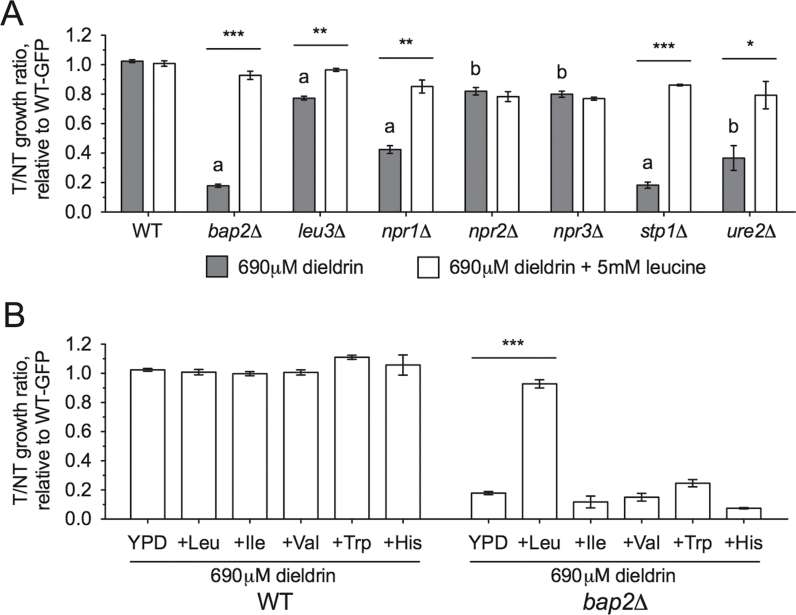Fig. 3.
Dieldrin sensitivity of mutants involved in amino acid or nitrogen processes is reversed by leucine. Deletion mutants were tested for sensitivity to the dieldrin IC25 (690μM) by flow cytometry, in which relative growth of each mutant was compared with a wild-type GFP strain after 24h. Means of the growth ratios (treatment vs. control—T/NT) to wild-type GFP are shown with SE for three independent YPD cultures. Significance values were calculated by Student’s t-test, where a p < 0.001 and b p < 0.01 for dieldrin-treated wild-type versus mutant, whereas ***p < 0.001, **p < 0.01, and *p < 0.05 for dieldrin versus dieldrin-leucine treatment. (A) Amino acid uptake and signaling mutants, as well as those involved in nitrogen utilization, are sensitive to dieldrin, with most mutants rescued by addition of 5mM leucine. (B) Amino acids related to leucine or transported by Bap2p cannot reverse dieldrin sensitivity in bap2Δ. Leucine, isoleucine, valine, and histidine were added to YPD media at a final concentration of 5mM, whereas tryptophan was present at 2.5mM.

